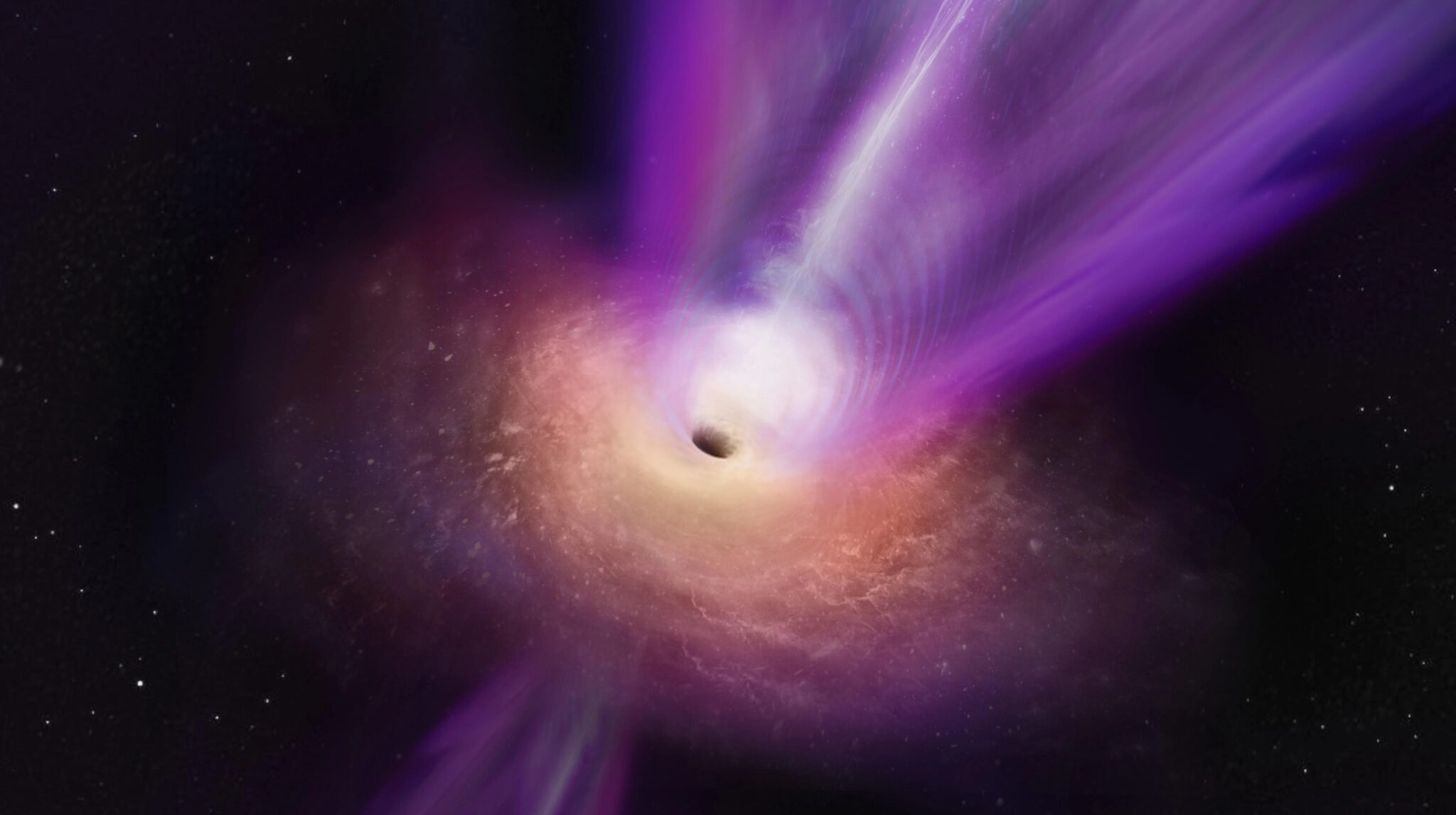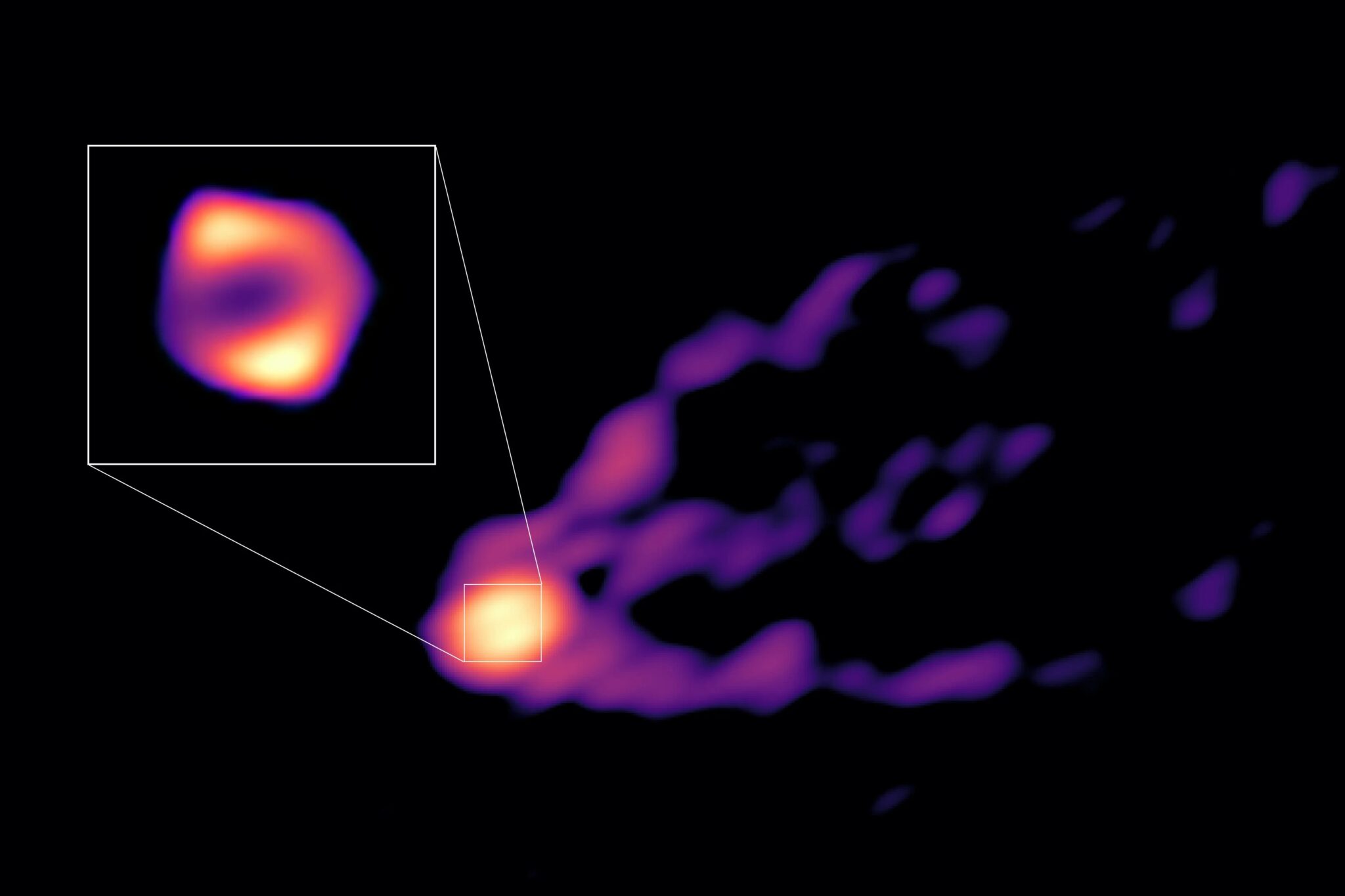The radio network of the Event Horizon Telescope (EHT) has shown the results of new observations of the black hole M87* in the center of the galaxy Messier 87. A new composite image of the structure of the superheated matter surrounding it, a high-speed relativistic jet and the eerie shadow of the black hole.

Black holes are superdense objects which gravitational pull is so strong that even light cannot go beyond the event horizon. Supermassive black holes surrounded by heated matter, known as an accretion disk, sometimes release high-speed jets into space from galactic centers. M87* is 6.5 billion times the mass of the Sun, and its jet is a stream of plasma 4,000 light-years long, ejected from the object at almost the speed of light.

The black hole of the Messier 87 galaxy was examined for the first time in history in 2019. Then EHT continued the monitoring work. The result of many years of observation was to obtain the clearest image of a black hole, improved by machine learning algorithms. To improve the EHT resolution for the recently published image, observations from the Northern Greenland Telescope and the Southern Atacama Millimeter/Submillimeter Array (ALMA) in Chile were added.
What we can see
The new image shows a much larger ring of heated material than in the first images of the black hole. In the center of the ring is a black hole or its “shadow”, as scientists say, because the black hole itself cannot be seen. It turns out that the M87* ring is 50% larger than previously thought. The plasma flowing out of the ring looks like a powerful jet of heated material that shoots out from the center of the galaxy.
M87* is not the only black hole targeted by EHT. Last year, the collaboration revealed the first image of Sagittarius A*, a 4 million-solar-mass black hole at the center of the Milky Way, just 27,000 light-years away. The closest black hole to Earth is in the Gaia BH1 system, about 1600 light-years away.
Black holes remain mysterious, but with the new technology of telescopes and perhaps with the subsequent help of artificial intelligence, scientists will be able to learn more about their nature — and, in turn, about some of the greatest mysteries of the Universe.
Earlier we reported on how intermediate-mass black holes scattered their food.
According to Gizmodo
Follow us on Twitter to get the most interesting space news in time
https://twitter.com/ust_magazine

